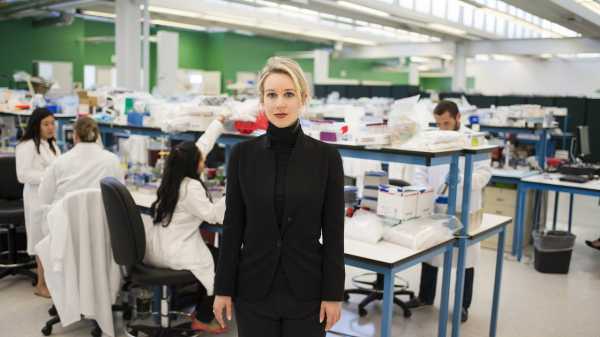
Late last year, I picked up John Carreyrou’s “Bad Blood,” which chronicles a long con pulled by Elizabeth Holmes, an entrepreneur who dropped out of Stanford at nineteen to found Theranos, a company that she claimed would reinvent the biomedical industry. I was instantly engrossed—“Bad Blood” unfolds like a thriller, offering a breathless barrage of details exposing how Holmes deceived her investors and colleagues at nearly every turn. Holmes wanted to disrupt the blood test: she boasted that her company was developing a method for running hundreds of lab tests from a single drop of blood, using a machine called “The Edison” that used nanotechnology and robotics to analyze those droplets. (It never worked consistently, if at all, but Holmes first hyped, and later faked, the machine’s tests.) In just a few short years, thanks to Carreyrou’s investigations and leaks from whistleblowers, Holmes went from Silicon Valley’s golden girl—named the youngest self-made female billionaire by Forbes—to a disgraced fraudster whose company was under investigation by the U.S. Securities and Exchange Commission.
“Bad Blood” does a formidable job charting the Theranos ordeal, but it doesn’t get into Holmes’s head. After reading the book, I found myself searching for clues to her true character. I Googled pictures of the C.E.O. at the height of her powers (bottle blonde, a smear of red lipstick, the same Steve Jobsian black turtleneck every day), comparing them with her look after she’d been found out (pale blue oxfords, bare face, a delicate crucifix necklace). I watched her old TED Talks and lectures and listened to the unnerving sound of her voice, a husky baritone that Carreyrou posits might have been fake. Adam McKay’s upcoming Hollywood adaptation of “Bad Blood,” starring Jennifer Lawrence as Holmes, will no doubt attempt to explain its antiheroine’s motives, imposing some neat psychological arc. But, as “The Inventor: Out for Blood in Silicon Valley,” a new HBO documentary from Alex Gibney, shows, the real Holmes remains vexingly sphinxlike, no better understood today than when she was in the depths of her deception.
Gibney, who has made documentaries about such cagey entities as Enron and the Church of Scientology, told me recently that the Theranos scandal was the most difficult story he’s reported, owing to the company’s atmosphere of intense secrecy and paranoia. It was only after the company fully dissolved, in 2018, that people began to speak with him. Readers of “Bad Blood” will be familiar with much of the material Gibney assembled for “The Inventor,” which features Carreyrou as a talking head. But the documentary is worth watching for the range of archival footage Gibney dug up, including some from inside Theranos’s clandestine headquarters.
We see, for instance, clips of Holmes in the ultra-modern, aggressively bright Theranos office, posing next to a large white wall she printed with a Yoda quote, “Do or do not, there is no try.” We see her give a self-aggrandizing speech to her staff about how she charmed the President of Brazil at a private dinner party, and about how Theranos’ enemies are simply jealous of their progress. We see her, in a rare moment of levity, dancing with glee to M. C. Hammer’s “Can’t Touch This” after learning that the F.D.A. had approved a minor patent, just months before the fraud revelations broke. One clip shows the making of a promotional Theranos advertisement, for which Holmes hired the documentarian Errol Morris. “I’m a fan!” Morris tells her, as she steps in front of a ring light for the director’s signature close-up shot. The unblinking gaze from her ice-blue eyes, which once telegraphed a monastic intensity, looks, in hindsight, like the mesmerizing stare of a hypnotist. In “The Inventor” ’s most chilling shot, Gibney shows us a slow dissolve between two portraits of Holmes: in one, she looks serious, formidable, a person able to convince Henry Kissinger and Rupert Murdoch that Theranos could change the world. In the other, her mouth stretches into a tight-lipped, inscrutable smile. In the end, the sequence suggests, no matter how long we look at her, we may never get the answers we’re really after.
Sourse: newyorker.com






